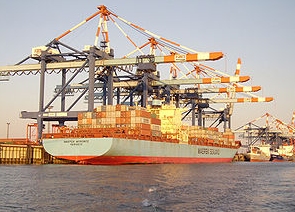 USDA-FAS data collated by USAPEEC, reflecting export volume and values for shell eggs and egg products are shown in the table below comparing January-July 2021 with the corresponding months in 2020:-
USDA-FAS data collated by USAPEEC, reflecting export volume and values for shell eggs and egg products are shown in the table below comparing January-July 2021 with the corresponding months in 2020:-
|
PRODUCT
|
Jan.-July 2020
|
Jan.-July 2021
|
Difference
|
|
Shell Eggs
|
|
|
|
|
Volume (m. dozen)
|
78.3
|
116.2
|
+37.9 (+48.4%)
|
|
Value ($ million)
|
68.0
|
116.8
|
+48.8 (+71.8%)
|
|
Unit Value ($/dozen)
|
0.87
|
1.03
|
+0.16 (+18.4%)
|
|
Egg Products
|
|
|
|
|
Volume (metric tons)
|
23,586
|
21,281
|
-2,305 (-9.8%)
|
|
Value ($ million)
|
62.0
|
63.2
|
+1.2 (+1.9%)
|
|
Unit Value ($/metric ton)
|
2,629
|
2,970
|
+341 (+12.9%)
|
|
U.S. SHELL EGG AND EGG PRODUCT EXPORTS DURING
JANUARY-JULY 2021 COMPARED WITH 2020
|
Source USDA-FAS/USAPEEC
SHELL EGGS
Shell egg exports from the U.S. during January-July 2021 increased by 48.8 percent in volume and 71.8 percent in total value compared to the corresponding months in 2020. Unit value was 16.0 cents higher to $1.03 per dozen for the comparison between 2020 and 2021. The top two importers, Hong Kong and Mexico combined, represented 66.0 percent of volume and 46.8 percent of total value.
Mexico was the leading importer of shell eggs during January-July 2021 with 34.6 million dozen representing 29.8 percent of volume and 23.4 percent of total value corresponding to a unit value of $0.79 per dozen. Prospects for additional sales will depend on continued acceptance of washed, white-shelled eggs held under refrigeration for retail sale, first announced in September 2018 but implemented in late 2019. For January-July, 2021 imports of shell eggs by Mexico increased by 18.4 percent in volume and also 33.8 percent in value compared January-July 2020. During July export volume to Mexico declined 14.5 percent from June 2021. During July, Mexico resumed 1st rank among importers receiving 5.3 million dozen valued at $3.9 million.
Hong Kong was the second-ranked importer of shell eggs in January-July 2021, with 31.4 million dozen representing 27.0 percent of volume and 23.5 percent of the $116.8 million total value of U.S. shipments of shell eggs. Average unit value was $0.87 cents per dozen, similar to the average prevailing nest-run USDA benchmark price during January-July 2021.
South Korea was the 3rd-ranked importer receiving 19.9 million dozen during February-July with 2.7 million dozen in February, 1.6 million dozen in both March and April, 5.1 million dozen in May 2021. Volume declined to 3.4 million dozen in June but increased to 4.0 million dozen in July. The value for the five months was $26.1 million with a unit price of $1.31 per dozen. Importation of U.S. eggs was necessitated by severe losses in laying flocks due to H5N8 avian influenza. Flocks are being restored with an anticipated future decline in requirements.
Canada was 4th-ranked with increased imports of shell eggs during the first seven months of 2021 to 13.4 million dozen up 112.6 percent from 6.3 million dozen during the corresponding period in 2020 impacted by COVID. Value attained $14.0 million, 41.4 percent more than in January-July 2020 with a unit price of $1.04 per dozen. During July Canada imported only 0.5 million dozen shell eggs. Canada imports shell eggs from the U.S to supplement domestic supply that is constrained by the national managed production program.
The Middle East Region imported 5.0 million dozen during January-July 2021 valued at $4.8 million with a unit price of $0.96 per dozen. Volume in 2021 was 18.0 percent lower than in January-July 2020. Southern E.U. nations in addition to India, Poland and the Ukraine have a competitive advantage in this market limited only by outbreaks of avian influenza, antibiotic residues and SE.
The Caribbean Region represented 3.2 percent of export volume and 5.3 percent of value for January-July 2021. The unit value of shell eggs exports to the Caribbean apparently averaged $1.27 per dozen, ($1.22 during 2020). This is disproportionately high compared with the average export realization, most probably because a proportion of shell eggs enumerated may have been either fertile hatching eggs or enriched specialty eggs.
EGG PRODUCTS
 The total volume of exported egg products during January-July 2021 decreased by 9.7 percent to 21,281 metric tons compared to 2020. Total value of $63.2 million was higher by 1.9 percent compared to January-July 2020. Unit value increased by 12.9 percent to $2,970 per ton from $2,629 recorded for January-July 2020. This fluctuation reflects the relationship between World supply and demand with Ukraine and India as significant exporters. During July 2021 the U.S. exported 2,884 metric tons of egg products valued at $8.4 million with a unit price of $2,913 per metric ton. Shipments in July were 12.4 percent lower than in June 2021 and 17.8 percent lower than July 2020
The total volume of exported egg products during January-July 2021 decreased by 9.7 percent to 21,281 metric tons compared to 2020. Total value of $63.2 million was higher by 1.9 percent compared to January-July 2020. Unit value increased by 12.9 percent to $2,970 per ton from $2,629 recorded for January-July 2020. This fluctuation reflects the relationship between World supply and demand with Ukraine and India as significant exporters. During July 2021 the U.S. exported 2,884 metric tons of egg products valued at $8.4 million with a unit price of $2,913 per metric ton. Shipments in July were 12.4 percent lower than in June 2021 and 17.8 percent lower than July 2020
Japan was the leading importer over the past seven months based on a value of $24.5 million and a volume of 7,183 metric tons that represented 33.7 percent of the total U.S. exports of egg products, an increase of 28.7 percent compared with the first seven months of 2020. The high unit value of $3,401 per metric ton compares with the average value for all U.S. exports of $2,960 or $2,745 excluding Japan. The discrepancy in unit price reflects the product mix. With conclusion of a bilateral trade agreement the U.S. will no longer be at a competitive disadvantage with respect to the E.U. In July 2021 Japan was higher in volume by 12.1 percent to 1,041 metric tons compared to July 2020 but 21.1 percent lower than in June 2021.
Canada was 2nd in rank among importers, purchasing 3,796 metric tons over the first seven months of 2021 comprising 17.8 percent of volume and 13.8 percent of value with a low unit price of $2,292 per metric ton. During January-July 2021 Canada decreased volume by 2.5 percent and value by 11.5 percent compared to January-July 2020 reflecting restoration of the institutional and food service sectors. In July Canada was the 3 rd ranked importer reducing volume by 14.2 percent over June 2021 to 468 metric tons.
Mexico was the 3rd-ranked importer based on volume and 4 th ranked on value during January-July 2021. Mexico received a volume of 3,771 metric tons comprising 17.7 percent of export volume and 12.7 percent of value with a unit price of $2,121 per metric ton. Mexico reduced volume over the seven-month period compared to 2020 by 50.0 percent. In July Mexico was 4th ranked with shipments of 316 metric tons, 74.0 percent less than in July 2020.
South Korea ranked 4th, imported 3.395 metric tons of egg products over January-July 2021 up 210.3 percent from 2020 due to a decline in domestic supply as flocks were depleted due to avian influenza. In July 2021 South Korea was the 2nd largest importer with 634 metric tons valued at $1.4 million and up 27.1 percent from June 2021.
Notable changes during January-July 2021 included an 82.2 percent decrease in exports to the UK+EU to 247 metric tons representing 1.2 percent of volume valued at $4.0 million at a unit price of $1,619 per metric ton. There were apparently no shipments to the E.U.+U.K in June or July 2021.
COMMENTS
Successful conclusion of negotiations to replace NAFTA led to the trilateral USMCA, announced on September 30th 2018. The subsequently-modified agreement was ratified by the Parliament of Canada, 17 months after signing the basic trade pact and only after adoption by the U.S. Congress and the Senate of Mexico in late 2019. Exports of shell eggs and egg products to our neighbors were valued at $74.7 million in 2017, $89.7 million in 2018 and $80.8 million in 2019. During the first seven months of 2021 the value of shell eggs and egg products attained $58.0 million or 33.2 percent of combined export value.
In addition to landed cost, logistics and availability, prospects for long-term exports of shell eggs will be limited by disease considerations. Exports will be dependent on the willingness of importers to accept the World Organization for Animal Health (OIE) principle of regionalization in the event of outbreaks of exotic Newcastle disease or isolation of either H5 or H7 avian influenza (AI), irrespective of pathogenicity. Most importing nations are now applying regionalization and permitting imports on a county or state-exclusion basis following H5 or H7 AI infection.
Generally pasteurized egg products should not be subject to any embargo imposed following reports of AI or Newcastle disease in a region.